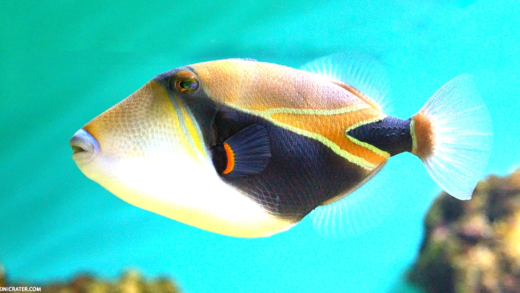Cape Horn is where the Atlantic and Pacific Oceans meet, creating unique interactions and ecosystems. The mixing of waters is complex, influenced by temperature and salinity. Cape Horn is historically significant for maritime navigation, with rich marine life differing between the two oceans. Myths about the waters not mixing persist due to visual differences and public perception.
The Meeting Point: What Happens at Cape Horn?
Cape Horn is where the Atlantic and Pacific Oceans meet, creating a unique and dynamic environment. At this point, the waters from two distinct oceans come together, leading to fascinating interactions. The mixing of different water masses creates a rich tapestry of marine life and influences weather patterns in the region.
As the Atlantic Ocean flows into the Pacific, various phenomena occur:
- Wave Formation: The collision of waves from both oceans can lead to turbulent waters, making this area notorious among sailors.
- Temperature Variations: The Atlantic is generally warmer than the Pacific, leading to significant temperature gradients that can affect local weather.
- Currents and Tides: The meeting of these oceans creates powerful currents, such as the Humboldt Current, which influences marine ecosystems.
Understanding these interactions helps us appreciate the maritime significance of Cape Horn. It serves as a natural barrier, impacting navigation and maritime routes.
Mixing Waters: Do the Atlantic and Pacific Actually Blend?
When discussing the waters at Cape Horn, a common question arises: do the Atlantic and Pacific actually blend? The answer is both yes and no. While the two bodies of water meet, they do not mix immediately due to differences in salinity and temperature.
Here’s what happens:
- Salinity Differences: The Atlantic Ocean is saltier than the Pacific, creating a distinct layering effect.
- Temperature Disparities: Warmer water from the Atlantic tends to float on the cooler Pacific water, resulting in stratification.
- Gradual Mixing: Over time, as currents push water around, some mixing occurs, but it is not as uniform as one might expect.
Thus, while there is a visual meeting of the waters, the blending process is complex and takes time. This phenomenon leads to a vibrant marine ecosystem with unique species adapted to these conditions.
Ocean Currents: The Invisible Mixers
Ocean currents play a crucial role in the interaction between the Atlantic and Pacific Oceans at Cape Horn. These currents act like invisible mixers, distributing heat, nutrients, and marine life across vast distances.
Key currents include:
- Humboldt Current: This cold current flows northward from the southern Pacific, bringing nutrient-rich waters that support diverse marine life.
- Brazil Current: A warm current from the Atlantic that flows southward, influencing local temperatures and weather patterns.
- Gyres: Large circular currents help to circulate water and can influence climate conditions far from Cape Horn.
The interaction of these currents creates a unique marine environment, supporting various ecosystems and species. Understanding these currents helps to appreciate the complexity of marine life in this region.
Temperature Differences: Atlantic vs. Pacific
Temperature differences between the Atlantic and Pacific Oceans are significant, especially at Cape Horn. The Atlantic Ocean generally boasts warmer waters compared to the cooler Pacific. This temperature disparity creates a unique environment where marine life thrives differently in each ocean.
Key points to consider:
- Atlantic Warmth: The Atlantic’s warm waters can reach temperatures of up to 30°C (86°F) in some areas, particularly near the equator.
- Pacific Chill: Conversely, the Pacific waters around Cape Horn can be as cold as 5°C (41°F), especially during winter months.
- Impact on Marine Life: These temperature differences influence species distribution. For instance, warmer Atlantic waters support tropical species, while the colder Pacific is home to species adapted to frigid conditions.
These variances not only affect marine ecosystems but also play a role in weather patterns, influencing everything from storm development to ocean currents.
Observable Boundaries: Are There Lines in the Water?
When standing at Cape Horn, one might wonder about observable boundaries between the Atlantic and Pacific Oceans. Surprisingly, no clear lines exist, but there are indicators of their meeting point. The waters appear to blend visually, yet the mixing is complex due to factors like salinity and temperature.
Here are some observable phenomena:
- Color Differences: The Atlantic often appears a deeper blue, while the Pacific may look greener due to its nutrient-rich waters.
- Wave Behavior: The waves can behave differently at the boundary, with the Atlantic’s choppier waves contrasting with the Pacific’s more subdued swell.
- Marine Life Presence: Specific species may indicate the water type, with some fish preferring the warmer Atlantic while others thrive in the colder Pacific.
While these signs are subtle, they provide a glimpse into the dynamic interplay of two great oceans.
Maritime Significance of Cape Horn
Cape Horn holds immense maritime significance. It serves as a critical navigational point for vessels traveling between the Atlantic and Pacific Oceans. Historically, it has been both a gateway and a challenge for sailors.
Key reasons for its importance include:
- Strategic Location: Cape Horn is the shortest route between the Atlantic and Pacific, making it vital for trade.
- Historical Challenges: The treacherous waters around Cape Horn have claimed many ships, leading to its reputation as a sailor’s nightmare.
- Modern Navigation: Today, advanced technology helps navigate these waters, but the region still poses risks due to unpredictable weather and strong currents.
Understanding the maritime significance of Cape Horn allows us to appreciate its role in global trade and navigation history.
Marine Life: Ecosystems of the Atlantic and Pacific
Marine life at Cape Horn showcases the unique ecosystems of the Atlantic and Pacific Oceans. The mixing of waters creates distinct habitats where various species thrive. The Atlantic Ocean, with its warmer temperatures, supports a diverse range of marine life including dolphins, whales, and colorful fish. In contrast, the colder Pacific waters are home to species like seals and unique cold-water fish.
Here are some notable differences in marine ecosystems:
- Species Diversity: The Atlantic is rich in tropical species, while the Pacific has species adapted to harsher conditions.
- Feeding Habits: The warmer Atlantic waters support plankton blooms, attracting larger predators, whereas the Pacific’s nutrient-rich waters foster different food chains.
- Migration Patterns: Many marine species migrate between these oceans, influenced by seasonal changes in temperature and food availability.
This diversity not only enriches the marine environment but also highlights the ecological significance of Cape Horn as a meeting point for different oceanic life forms.
Historical Events at Cape Horn
Throughout history, Cape Horn has been the site of significant maritime events. Its treacherous waters have challenged sailors for centuries, leading to numerous shipwrecks and heroic tales. The early 19th century saw the rise of Cape Horn as a critical passage for ships, especially during the California Gold Rush.
Key historical events include:
- The Clippert Ship Era: Fast sailing ships known as clippers began using this route, making it a major shipping lane.
- Notable Shipwrecks: Many vessels met their fate in the turbulent waters, contributing to the legends surrounding Cape Horn.
- Modern Navigation: Advances in technology have transformed how vessels navigate this area, reducing the dangers once faced by sailors.
Understanding these historical events adds depth to the maritime significance of Cape Horn, marking it as a critical point in global trade routes.
Misconceptions: Why Some Believe the Waters Don’t Mix
Many myths surround the waters of Cape Horn, particularly the belief that the Atlantic and Pacific Oceans do not mix. This misconception stems from the visible differences in water color and behavior at the meeting point. In reality, while the waters do meet, they do not blend immediately due to factors like temperature and salinity.
Here’s why this myth persists:
- Visual Appearance: The contrasting colors of the oceans create an illusion of separation, leading to the belief that they remain distinct.
- Temperature Effects: The warmer Atlantic water often floats above the cooler Pacific, enhancing the idea that they do not mix.
- Public Perception: Stories and legends passed down through generations have solidified this misconception in popular culture.
Addressing these misunderstandings is essential for appreciating the complexities of oceanic interactions at Cape Horn.





Comments are closed.